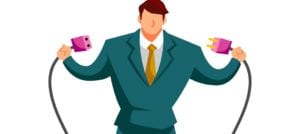As we move into the era of DevOps, it is an opportune moment to pause and reflect. It is well worth considering just how fit for purpose the organisational structure currently in place in the vast majority of IT support teams actually is.

Not to beat around the bush, many will find that that their current systems are flawed. Structures that have these fundamental flaws will find that these flaws are fatal too – making it near impossible to successfully integrate DevOps with their existing technical support structures.
The technical support solution to these problems may just come in the shape of the practice of ‘Swarming.’
It is the management structure underpinning most enterprise IT support functions that is inadvertently causing problems. Most IT service management teams operate a three-tier support system.
Level 1 is the first-line response that deals with and resolves a good number of issues. Typically a service desk that answers customer phone calls, the focus is on providing a consistent customer service and at the same time offering general technical support.
The next tier of support, Level 2, is usually closely linked with the Level 1 Service Desk, but is able to provide more specialist advice and support and deal with more complex issues. Level 3 consists of specialist support teams, usually for specific applications and technologies.
Of course, the three-tier model has several business benefits. Customers only have to deal with one channel of communication. The technical support skills required for Level 1 and Level 2 are fairly easily found and straightforward to outsource. The triage system in place keeps the specialist support away from direct customer contact.
However, the three-tier system also creates several issues. Firstly, tiered support causes queues to occur. Any issue that cannot be immediately resolved automatically enters a queue. Secondly, a system of tiered support naturally puts the most skilled support at the back of the support mechanism. This means that the route to the person best placed to resolve an issue is often blocked. Finally, tiered support often creates a ‘bouncing’ effect. Cases are bounced back and to as specialist teams seek further information to be able to proceed.
‘Swarming’ – a networked collaboration model – is the viable alternative to the conventional three-tiered support approach. Put simply, swarming features a process based on collaboration instead of escalation.

With swarming there are no tiered levels of support and no escalations from one level to another. Instead, a case is moved directly to the person is best placed to be able to resolve the issue. The individual who takes a case on sees it through to a successful resolution.
Swarming begins as soon as it becomes clear that a problem cannot be immediately solved at the initial point of customer contact.
Each initial ‘swarm’ is a small team, not dissimilar to traditional tiered support teams, but it is dispatch swarming that significantly improves on the tiered model. Meeting regularly, ‘dispatch swarms’ enable any new tickets that can be immediately resolved to be identified and ‘cherry picked’. Secondly, tickets can be assigned to specific application or product line teams. Finally ‘backlog swarms’ – consisting of cross-departmental, experienced and skilled technical support professionals – focus on their primary objective: dealing with the most difficult of cases.

The focus on avoiding backlogs and enabling flexible teams to operate with autonomy, instead of within the rigid frameworks of a hierarchical three-tiered structure shows the advantages of a swarming approach.
This article was written by James Clayton, Senior Network and Infrastructure Consultant at Marcus Donald People.


